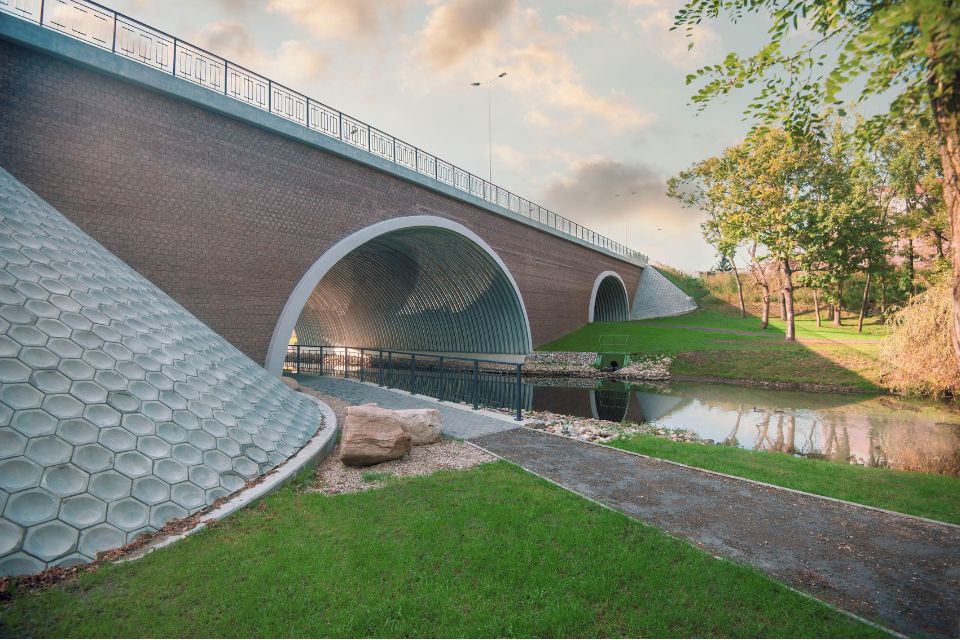On January 26th, the world observed International Environmental Education Day – an occasion for reflecting on the importance of education in fostering sustainable practices across industries and sectors and addressing environmental challenges. While this day traditionally focuses on raising awareness about environmental issues, it also offers an opportunity to explore innovative solutions that merge conservation efforts with essential civil infrastructure development. Among these, wildlife crossings and ecological bridges stand out as solutions that address habitat fragmentation and safeguard biodiversity.
By driving greater understanding of the role such infrastructure plays in environmental conservation, perhaps communities, policymakers, and engineers can prioritize nature-inclusive designs in their civil engineering projects.
Environmental Education and Infrastructure Design
Environmental education plays a pivotal role in shaping how societies perceive and interact with the natural world. By integrating ecological principles into engineering curricula and public policy discussions, educational programs can promote designs that balance development with environmental stewardship. International Environmental Education Day amplifies these efforts by highlighting best practices, success stories, and the urgent need for innovative solutions to pressing environmental problems.
One critical area of focus is the impact of transport infrastructure, such as roads, railways, and so on, on ecosystems. These structures often fragment habitats, disrupt animal migration patterns, and contribute to wildlife-vehicle collisions. Environmental education can help bridge the gap between traditional engineering practices and ecological considerations by emphasizing the importance of wildlife crossings and ecological bridges as effective mitigation strategies.
Wildlife crossings for critical biodiversity
Wildlife crossings—such as overpasses, underpasses, and tunnels—are engineered structures designed to provide safe passage for animals across human-made barriers like highways and railroads. These crossings are vital for maintaining ecological connectivity, reducing wildlife mortality, and promoting genetic diversity among animal populations.
Typical wildlife crossing projects include overpasses, which allow animals to cross over roads without encountering vehicles, underpasses and tunnels, which allow for safe passage underneath roads, and even aquatic crossings, which are designed for fish and aquatic species. Throughout the world, we see evidence of these crossings successfully creating harmony in communities where they are built.
ViaCon is a leader in contributing to this kind of sustainable infrastructure, including some of the following projects:
- E45 motorway fauna crossing in Sweden
- Ecological bridges in Turkey with the Ankara Eskisehir high-speed railway ecological overpass and Istanbul highway animal overpass projects
- Road 27 in Borås, Sweden animal crossing where the road passes through a natural forest ravine
Implications for sustainable infrastructure
Wildlife crossings and ecological bridges represent a broader paradigm shift in infrastructure development—one that prioritizes sustainability, resilience, biodiversity, and ecological integrity. These structures are emblematic of a future where human progress does not come at the expense of the natural world. It is important for policymaking, civil planning and both civil and private sector entities to consider the long-term and ecological impact of their construction projects with several key areas in mind:
- Policy integration
- Governments worldwide are beginning to mandate ecological considerations in infrastructure projects. For instance, the European Union’s Green Infrastructure Strategy promotes the integration of nature-based solutions into urban and rural planning.
- Technology
- Advances in remote sensing, geographic information systems (GIS), and wildlife tracking technologies are enabling more precise designs and monitoring of wildlife crossings.
- Educational initiatives
- Programs like “Engineering with Nature” and interdisciplinary university courses are equipping the next generation of engineers and conservationists with the skills needed to design sustainable infrastructure.
The next crossing: Where we go from here
International Environmental Education Day provides a platform to emphasize the importance of integrating ecological principles into civil infrastructure. Wildlife crossings and ecological bridges are more than engineering feats; they are testaments to humanity’s ability to harmonize progress with preservation. By prioritizing education, fostering cross-disciplinary collaboration, and championing innovative designs, we can ensure a future where infrastructure development supports both human and ecological well-being.

